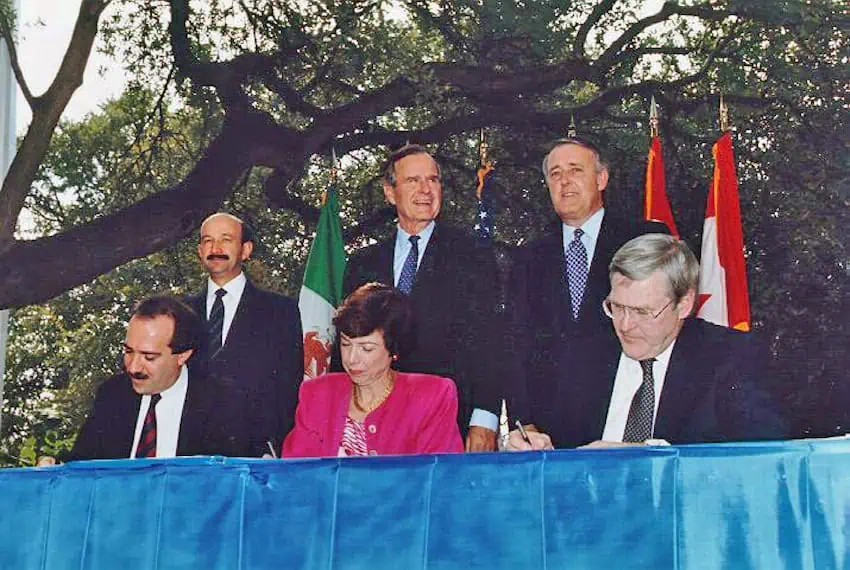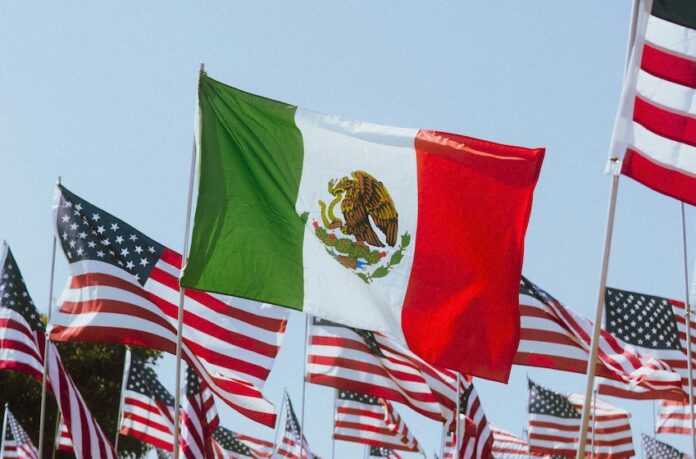Trump’s tariffs and accelerating trends in robotics and AI should be a wake-up call for Mexico.
Part 1: How did we get here?
Part 2: Why is a rethink of the Mexican economy necessary?
Part 3: What could a rethink of the Mexican economy look like?
The purpose of this three-part series is to reflect on the emerging trends of trade protectionism (tariffs), AI and robotics, consider the potential impacts on Mexico and foster a discussion on possible solutions. Please share your thoughts in the comments section and let’s have an inspiring and engaging discussion and debate.
Part 1: How did we get here?
Until recently, the world has operated under the premise that increased international trade and globalization would “raise all boats” and increase living standards for all who participated.
Since the end of World War II, this has been the dominant thinking of how to grow the global economy and bring about better integration. The model was to bring in more trading partners, sell more to each other, grow the market, increase standards of living for all and help ensure peace through the interconnectedness created by trade.
One by one, more countries were brought into the mix: first the countries of Western Europe, then Eastern Europe, Japan, Korea, Taiwan, the countries of Southeast Asia, China and of course, Mexico. Mexico was somewhat late to the party, being a relatively closed economy until the North American Free Trade Agreement (NAFTA) was signed with the United States and Canada in 1992. This agreement ushered in a wave of tariff-free trade agreements signed between Mexico that now include a total of 13 agreements covering 50 countries.
Mexico’s role in the free trade world was a natural and logical one — its lower cost of labor and geographic proximity to the United States made it a perfect co-production partner for manufacturing goods. When NAFTA was first signed, many in the U.S. feared that manufacturing jobs would move to Mexico to the detriment of American workers (the infamous “giant sucking sound” coined by Ross Perot).

Indeed, many new manufacturing jobs were created in Mexico, but it was China’s entry into the World Trade Organization (WTO) that ultimately had the biggest impact on U.S. workers and communities. Millions of jobs and countless factories went away as the production of many goods was moved to China.
The Mexican manufacturing boom
Early in my career, the first company I worked for was part of this trend. Originally with manufacturing located only in Wisconsin, in the early 1990’s the company bought a plant in central Mexico expecting to send manufacturing work there. Although some work was ultimately moved there, far more was sent to China. This was despite the fact that many of the end customers were actually in Mexico. It was cheaper to produce in China and ship to Mexico than to produce locally in Mexico.
Mexican manufacturing over time became increasingly competitive in certain market segments, and up until the COVID-19 pandemic, a “new normal” was settling in with China, Mexico and the U.S. all focused on the products that they could most competitively produce.
Of course, as we all know, the pandemic changed everything.
Supply chains broke down and companies everywhere began to question their manufacturing footprints. Words like nearshoring and friendshoring joined our vernacular, and Mexico seemed extremely well positioned to be a major beneficiary of the new manufacturing and production trends taking shape around the world.
Things changed quickly.
In 2023, Mexico, for the first time in over 20 years, became the leading supplier of goods to the United States. Mexico was clearly taking manufacturing market share from China and companies from around the globe were increasing production and reinvesting profits into their Mexican operations. In 2024, the country further increased its share of exports to the U.S., with products from Mexico representing over 16% and China falling below 14%.
As 2024 ended and Mexico closed the year with a record amount of Foreign Direct Investment (FDI), most people were feeling pretty good about how the country was positioned going forward.
Granted, the “new” component of FDI was concerningly low, but most people chalked that up to the uncertainty of the year given that there were presidential elections in both Mexico and the United States. Newly elected President Sheinbaum seemed to be far more “business friendly” than her predecessor, the inflation rate was coming down, the peso was stabilizing and both the global and Mexican economies seemed on firm footing.
But things changed quickly.
Trump’s election win brought about a sudden wave of uncertainty and attention to Mexico. Most of the initial demands from the United States were that Mexico control migration, crack down on the cartels, stop the flow of fentanyl and accept deportees. All important issues, but none that initially seemed to be a risk to economic momentum.
Few people expected that Trump would really attempt to undo the free trade agreement he proudly signed with Canada and Mexico during his first term as president. His initial threats of tariffs were directly linked to wanting to see more progress from Mexico on these non-economic issues. And to many people on both sides of the border, the argument seemed fair: “Mexico, help us clean up the issues that are causing problems in the U.S., and we will keep our free trade agreement intact.”
That being said, in just the past few weeks, the narrative from the United States on tariffs changed.
Trump’s tariff discourse takes a turn
Despite some initial quick and tangible progress from Mexico on the very issues that Trump initially emphasized, Trump has refocused the “need for tariffs” for economic reasons. Trump began to question the need for any manufacturing at all to take place outside of the United States. He continued to lament the lost jobs and broken communities caused by moving work abroad, and insisted that the focus needed to be on bringing these jobs back to the U.S.
And so here we are today. The most common argument against all of this is that the U.S. doesn’t have enough labor, nor the energy generation capacity, to be able to bring back a significant amount of jobs.
A logical concern is that moving work back to the higher-paid U.S. workforce and higher-cost manufacturing environment will cause significant inflation. But what if that is too overly simplistic or perhaps even an outdated explanation? What if companies could and do move significant work back, the workforce and energy production are found, and inflation is kept in check?
Let’s even completely forget about tariffs for a moment. Although it might sound like science fiction, consider the impact that increased robotics could have on the manufacturing workforce of the future. Consider what rapidly improving AI and factory “digital twins” could do to improve manufacturing efficiencies. Consider for a moment that we might just be on the brink of a new industrial revolution not seen in decades.
And then consider what this could all mean for Mexico and for what a rethink of the Mexican economy could look like. Part 2 will be published tomorrow in MND.
Thanks for reading.
Travis Bembenek is the CEO of Mexico News Daily and has been living, working or playing in Mexico for nearly 30 years.
